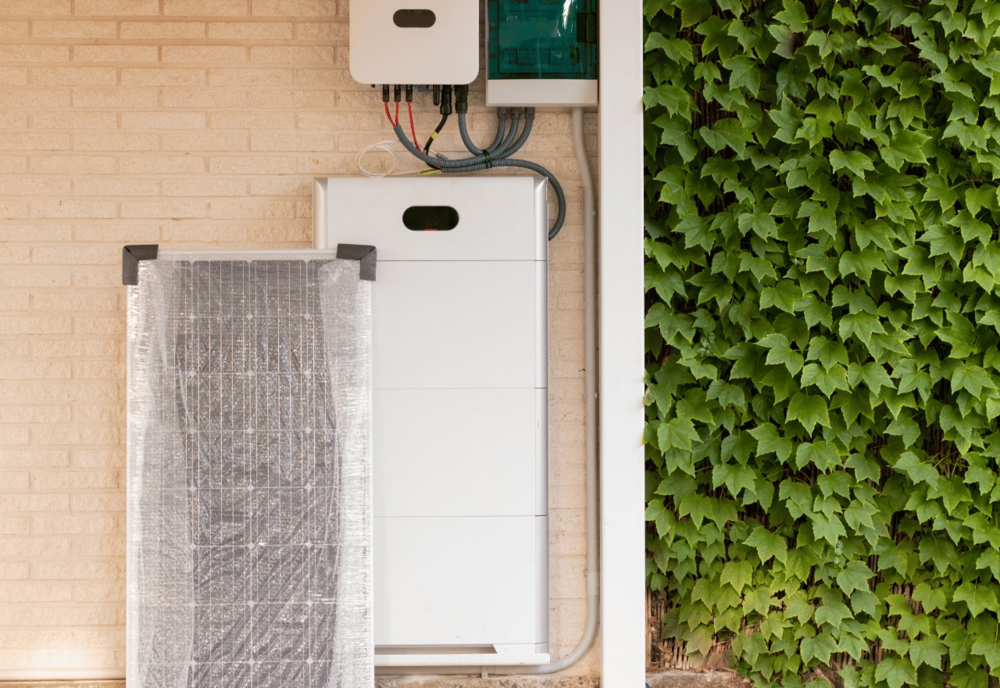Solar batteries the "way of the future" against rising electricity prices
Kristin Murdock
11 November 2023, 6:40 AM
 Many sources claim solar battery storage is the way of the future.
Many sources claim solar battery storage is the way of the future.Home battery storage is a hot topic for energy-conscious consumers, or those seeking more reliable and affordable power options, and are poised to become hugely popular as coal-generated power prices rise.
Local Trangie-based suppliers All A Glow Electrical say inquiries about new battery installations are already sparking across the western plains but demand is yet to fire.
According to consumer magazine Choice, as of 2023 there were about 180,000 home storage batteries installed in Australia, and 47,100 were installed in 2022 alone (an increase of 55% over the previous year).
About one third of those were an addition to an existing solar panel system, while the rest were included as part of a whole new solar installation. That means that about 14% of new solar installations in 2022 included a battery.
Solar power in general has become increasingly popular but there’s been a limitation – solar panels only provide energy for your home during the day and you still pay for electricity from the grid at night, or when atmospheric conditions mean you don’t generate all the energy you need.
The energy you produce but don’t use goes back to the grid.
Solar batteries can change all that.
With solar batteries, you’re able to store the energy generated by your solar panels and the battery will then distribute it at the end of the day, when the sun’s gone down and it is peak time for electricity use. This is called self-consumption.
Sunlight hours across the Western Plains provide an ideal solution to rising electricity bills but have locals been taking advantage of this new innovation?
Western Plains App spoke to Blair Hooper at All A Glow Electrical in Trangie.
"We get a lot of enquiries about solar batteries," Mr Hooper said. "I think they really are the way of the future. There's not so much the demand yet because the prices of the batteries are still scaring a few people away. But now that the electricity prices are going up so quickly I do believe that it will be in higher demand within the next couple of years. And that's what the industry saying as well."
According to Choice, typical battery costs for some common sizes (including installation) are 5kWh: $7000–9000, 10kWh: $11,000–14,000 and 15kWh: $15,000–18,000.
Mr Hooper said his family business deals primarily in household solar battery systems but he has installed solar panel systems at a pre-school and another property at Trangie and believes batteries are the next "big thing".
"If you design the system appropriately, you can be living off the solar all day and charge your batteries up with the solar power during the day and then all night you should be able to run everything in the house off the batteries at night," he said. "The batteries are lithium ion and the space needed is around the size of an external air conditioning unit."

Shawn and Blair Hooper of All a Glow Electrical in Trangie.
Mr Hooper said houses with existing solar panels on the roof will usually need an inverter to convert your solar power to 240 volt power to be able to use it in the house.
"A lot of the older inverters aren't backward compatible, so if you do already have solar panels, they will likely need a hybrid inverter installed."
Solar batteries are also handy during an electricity outage.
"If you lose power, the battery automatically cuts in so that you can actually use your free power for the basics," Mr Hooper said.
According to Energy Australia, solar battery storage can almost double a household’s self-consumption of solar energy. Adding a 4 kWh battery to a 5 kW solar system can increase the amount of solar power a household generates and consumes from 30 to 60%.

While Mr Hooper says it may take a few years of saved electricity bills to pay off your solar battery system, energy prices will still continue to rise.
The Australian Energy Regulator agrees saying high international energy prices will continue to put pressure on domestic prices, and forward markets continue to indicate high domestic gas and electricity wholesale prices will continue into 2023 and 2024.



